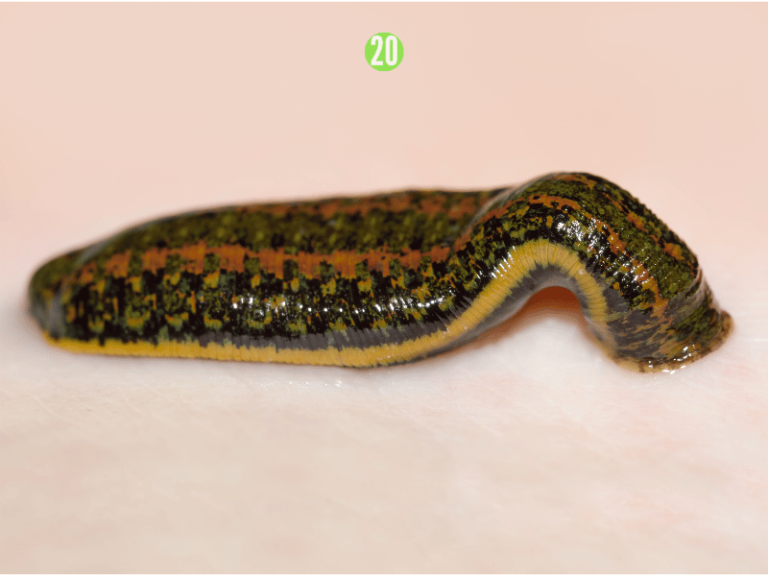The leech is a type of annelid, similar in shape to an earthworm but slightly flattened. They vary in length, with larger ones reaching up to 20 centimeters and smaller ones being less than 1 centimeter. They can secrete a sticky fluid that makes their bodies smooth. Each end of their body has a sucker, with the one at the head being smaller and the one at the tail being larger, used for attachment and movement. They live in lakes, streams, ditches, or on water plants and underwater at the edges of ponds. Sometimes, they crawl into damp grasslands or near trees close to water. They become active in late spring and early summer. In spring, you can often find mother leeches lying motionless in dried pond mud.
Leeches primarily feed on blood. At the center of the head sucker is its mouth, which has three fleshy jaws with many small saw-like teeth that can pierce human skin, creating a “Y”-shaped wound. When they bite, they secrete saliva containing an anticoagulant (also known as hirudin), which prevents the blood from clotting, causing the wound to bleed continuously. This is advantageous for leeches as it allows them to continue feeding. After being satiated, they can go for long periods without eating.
Leeches attach very tightly when they bite, making them difficult to pull off, leading some people to mistakenly believe that leeches burrow into the flesh. When bitten by a leech, you can pour saline water on it, which will cause the leech to be stimulated and drop off automatically. The wound can be treated with silver nitrate solution or by pressing around the wound with fingers for a minute or two to stop the bleeding.

